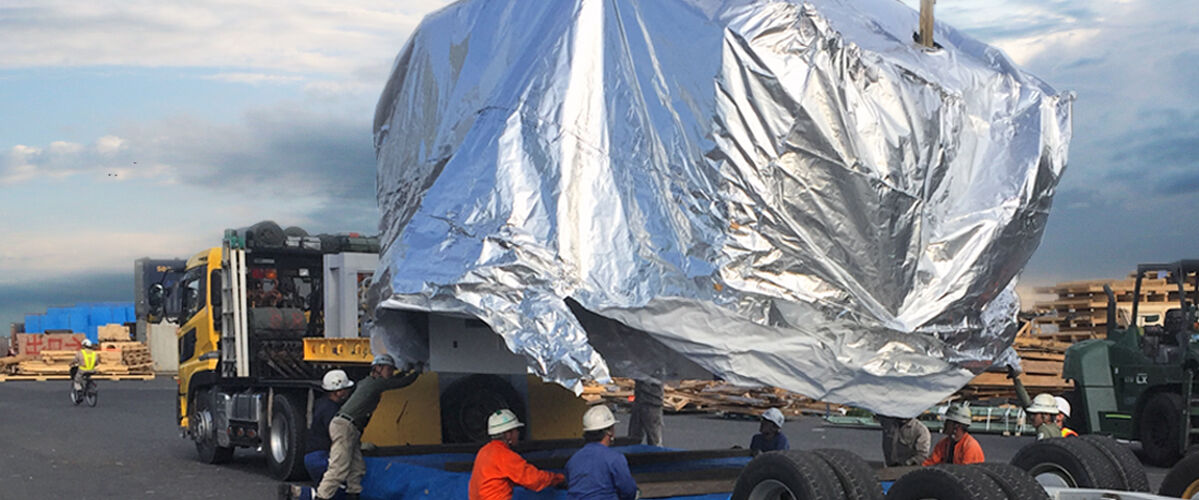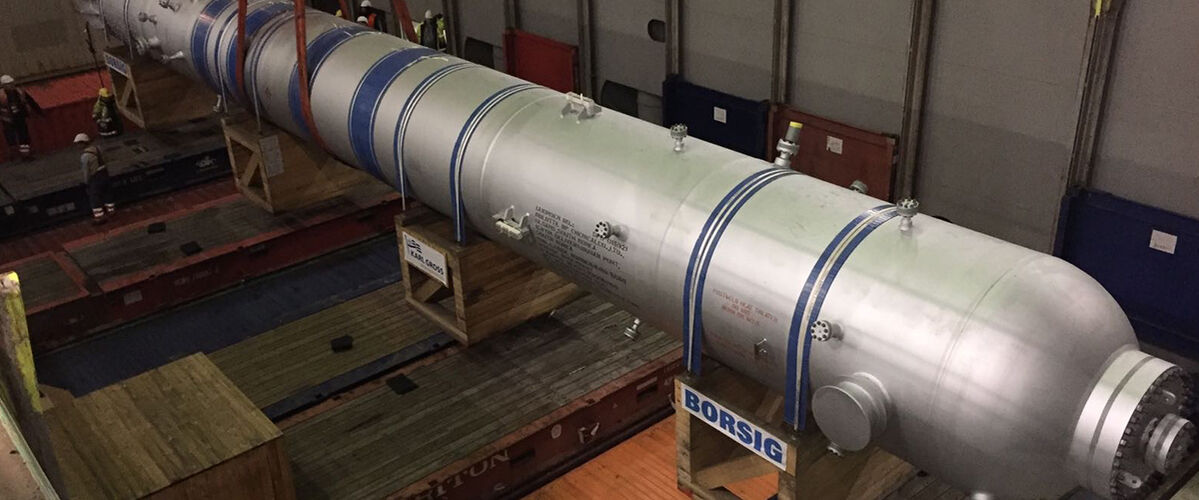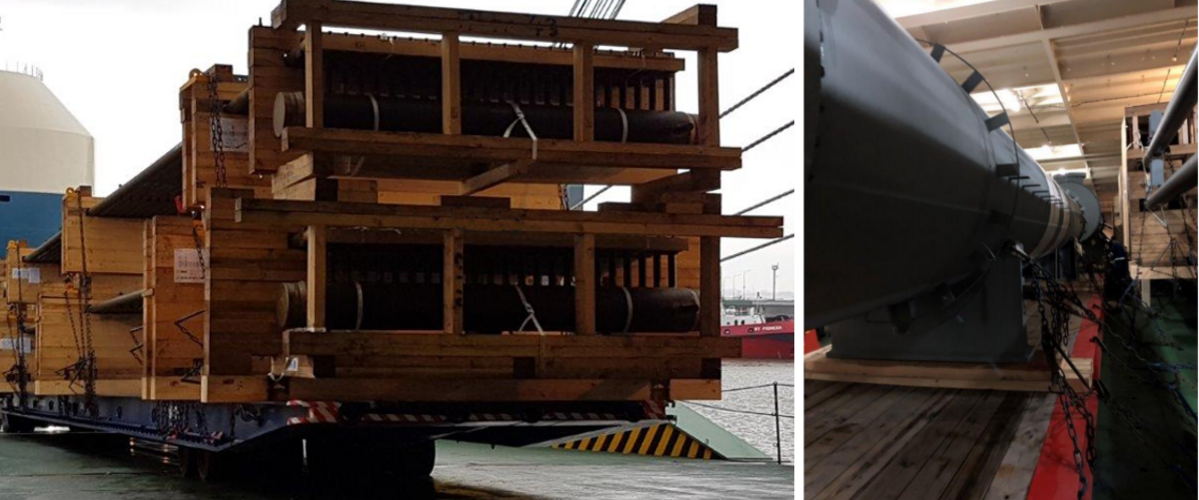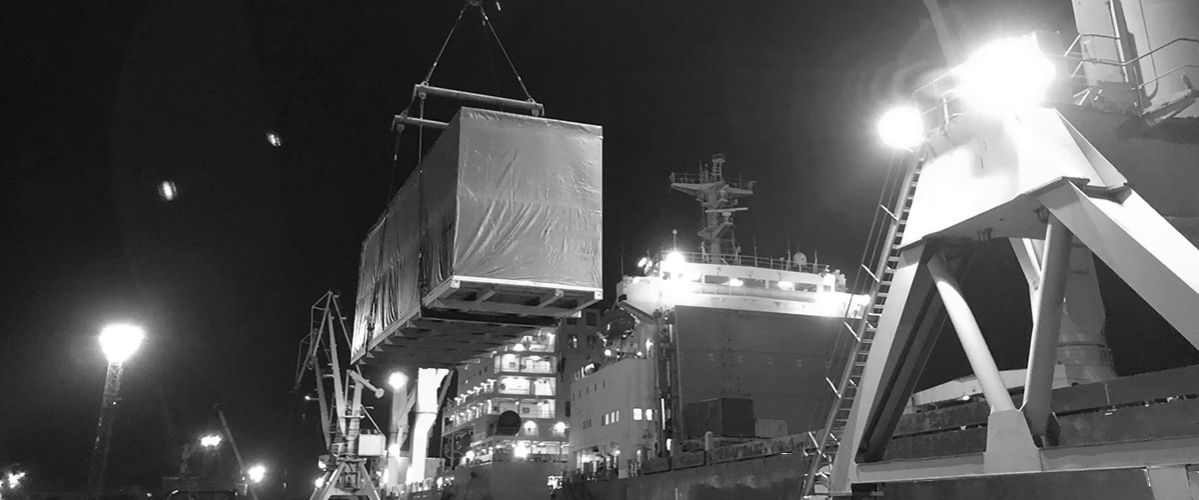How the Karl Gross specialists successfully develop logistics solutions for project cargo destined to the "Land of the Rising Sun".
Japan is an attractive export market for European manufacturers of machinery and industrial equipment. But it is not uncommon to face logistical challenges there, when it comes to transporting oversized cargo from the port of entry to its final place of delivery. Read more about how Karl Gross as specialist for project cargo logistics deals with the requirements on this ‘special trade lane’.
Having been manufactured in Europe, oversized industrial plants and machinery find an attractive export market in Japan. "The waterway connection between North-Western Europe and the Japanese ports are good. The challenge in project cargo shipments to Japan is usually the transport of oversized goods within Japan. “So we are happy that from experience, we know how to develop successful logistics solutions there", Igor Bartuli says. As project coordinator, he is often the man on site and can share his experiences.
The 'bottleneck' oftentimes is the on-forwarding of oversize and overweight cargo.
"Project cargo shipments to Japan make us prick up our ears. Usually it doesn't take long until someone asks: What does the MLIT say?”
The MLIT (Ministry of Land, Infrastructure, Transport and Tourism) issues transport permits in Japan. “One 'bottleneck' is the specifications regarding cargo dimensions are tight looking at it from a project cargo logistics perspective”, Igor Bartuli says.
Tight specifications – substantial waiting times
In Japan, truckloads are subject to approval from a package width of 250 centimeters and a height of 380 centimeters – loaded on trucks. Project cargo more often than not exceeds these dimensions - often significantly.
In addition, the approval process in Japan may take several months. "We have already heard that a permit was waited for half a year," Igor Bartuli says. And the answer is not always ‘hai’ (yes), but may well be ‘iie’ (no).
The 'go' for a transport permit requires approval from more than just one central authority
"Transport permits applied for must be approved by all relevant road managers and all local police authorities", Igor Bartuli says. This does not make the process any easier. "The time that goes by until all authorities have made their decision is long when looking at it from a planning perspective. This, of course, is particuliarly true when shipments are urgent. “
Another potential challenge: the port of destination
Another challenge in Japan is the prescription that the port of entry should be the nearest one to the final destination of the cargo. For freight forwarders, it is of course important to know whether the port is suitable for the oversized/overweight goods and accepts the cargo as such. At the same time, it has to be checked if all necessary facilities are available there to prepare the cargo for the on-carriage.
Best practices: Successful project logistics solutions for trade lane Japan!
The shipment: The delivery of an industrial plant consisting of more than 20 cargo parts – many of them significantly oversized. The challenge: a very tight time schedule.
Igor Bartuli, project coordinator at Karl Gross, describes this shipment as follows:
"For each oversized cargo part, we had to find a solution to make the goods transportable within Japan sticking to the country-specific requirements. In this case, we were able to apply a principle that had already proved itself successfully in the past: We reduced the dimensions per package! This requires sensitivity."
The balancing act between product protection and reducing the dimensions is complex.
The motto was: as much packaging as necessary, but as little volume as possible. One solution for the shipment in question was to remove the seaworthy packaging. "However, we rarely consider removing the protective packaging completely. While for some oog pieces, it was sufficient to remove the crate cover, for other packages we had to 'think out-of-the-box’ – and applied our know-how.”
Successful logistics solutions through cooperation and exchange of know-how
When it comes to developing individual transport solutions for project cargo, Karl Gross often forms so called 'task forces' consisting of all parties involved in the shipment.
A close cooperation with the manufacturer and especially its engineers is important. For example, it can be clarified whether the machinery may be transported unpacked at all and how it can be secured and lashed for transport.
The logistics result for the industrial plant:
Transport of all 20 cargo parts in tune with the Japanese regulations and on-time delivery of the cargo. This shows how valuable a worldwide network, close cooperation and know-how regarding country-specific requirements are.
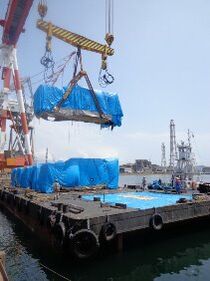
"With other shipments which encompass so called 'heavy lift cargo' with lengths of more than ten meters and weights of more than 120 tons, it is different”, Igor Bartuli says. "Here we make use e.g. of the advantages of the Japanese island structure as far as possible. But all in all, the local freight forwarding and logistics partner is absolutely important for developing successful logistics solutions in Japan.”
Interpersonal bridges: mentality, communication and trust
It goes without saying that the global network of the Karl Gross Group is well coordinated. In order to be able to map complex processes and particularities, not only fluent and unmistakable communication is important. Dealing with different mentalities is essential. This applies e.g. to dealing with agreements and plans, but also to handling unscheduled events that have an influence on the further logistics planning and implementation.
The local logistics partner truely is a key factor in organising successful solutions for project cargo shipments in Japan.


